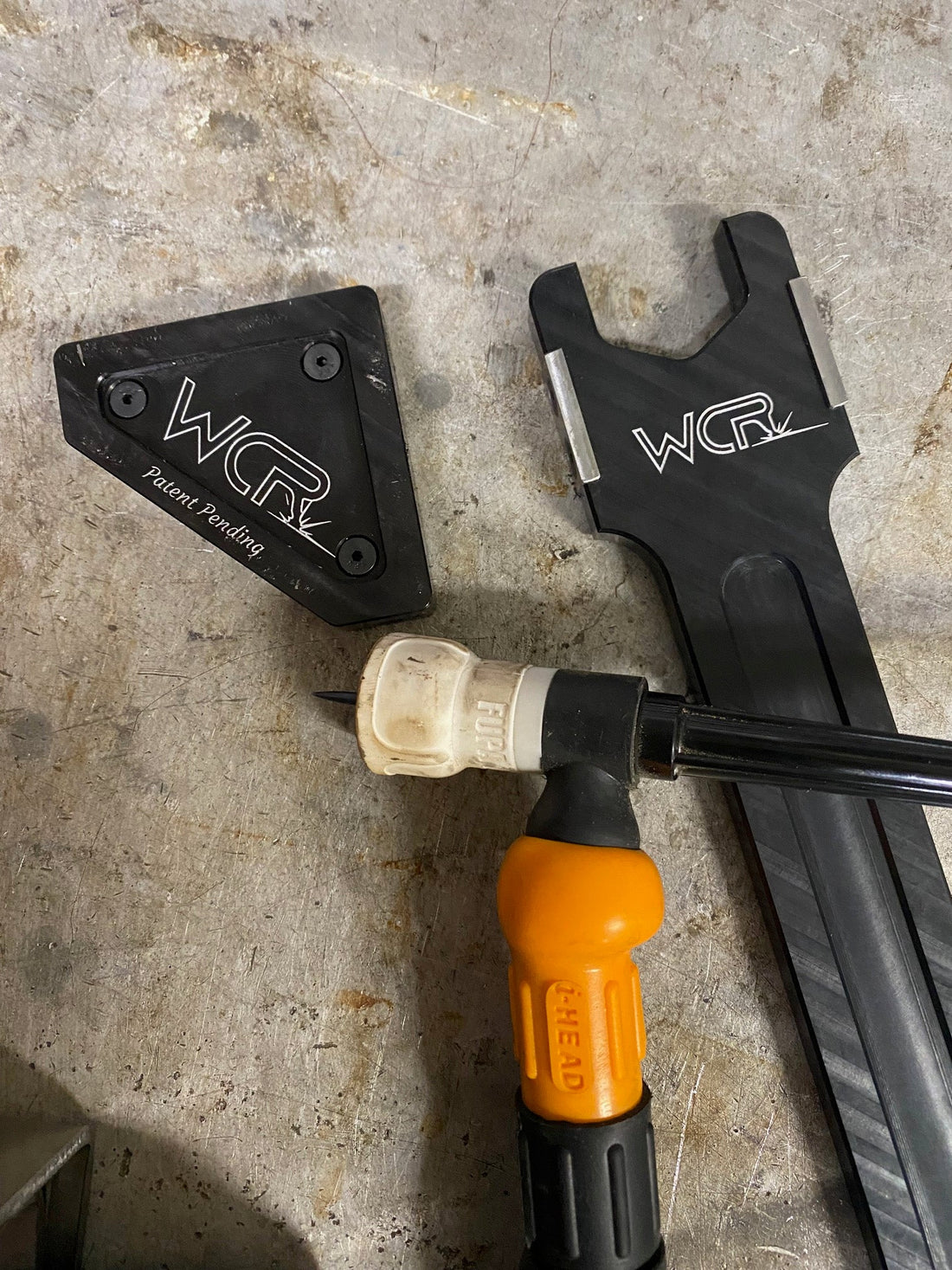Tungsten Electrodes for TIG Welding — Types, Uses, and Expert Tips
What Are Tungsten Electrodes in TIG Welding?
Tungsten electrodes are the non-consumable tips used in TIG welding (Gas Tungsten Arc Welding — GTAW) to create the arc that melts the base metal. Tungsten is chosen for its extremely high melting point (over 6,000°F / 3,300°C) and excellent arc stability.
While the tungsten itself does not melt into the weld pool, the type of tungsten electrode you choose affects:
-
Arc stability
-
Weld bead quality
-
Electrode life
-
Ease of arc starting
Types of Tungsten Electrodes and When to Use Them
Pure Tungsten (Green)
-
Composition: 99.5% tungsten
-
Best For: AC welding on aluminum and magnesium
-
Key Benefits: Excellent balling action, smooth arc stability on AC
-
Notes: Primarily used with older transformer-based TIG welders; less durable than alloyed options.
Thoriated Tungsten (Red – 2% Thorium)
-
Composition: 97.3% tungsten, 1.7–2.2% thorium oxide
-
Best For: DC welding on carbon steel, stainless steel, nickel alloys
-
Key Benefits: Superior arc starting, high current capacity, long electrode life
-
Notes: Slightly radioactive — grind with care and use ventilation.
Ceriated Tungsten (Grey – 2% Cerium)
-
Composition: 97.3% tungsten, 1.8–2.2% cerium oxide
-
Best For: DC welding at low amperages; excellent for thin sheet metals
-
Key Benefits: Exceptional arc starting at low amps; ideal for precision work
-
Notes: Popular in orbital welding and small component fabrication.
Lanthanated Tungsten (Blue – 2% Lanthanum)
-
Composition: 97.3% tungsten, 1.8–2.2% lanthanum oxide
-
Best For: AC and DC welding on stainless steel, carbon steel, aluminum
-
Key Benefits: Versatile, long-lasting, stable arc at both high and low amperages
-
Notes: Increasingly replacing thoriated tungsten due to safety and performance.
Zirconiated Tungsten (Brown – 0.8% Zirconium)
-
Composition: 98.6% tungsten, 0.7–0.9% zirconium oxide
-
Best For: AC welding on aluminum and magnesium
-
Key Benefits: High resistance to contamination, resists splitting under load
-
Notes: Excellent choice for high-purity welds with minimal tungsten inclusions.
Rare Earth Tungsten (Gold or Purple)
-
Composition: Blend of oxides — typically lanthanum, cerium, and yttrium
-
Best For: AC and DC welding across multiple metals
-
Key Benefits: All-purpose performance, stable arc, long life, high current carrying capacity
-
Notes: Often marketed as a “universal” tungsten electrode for TIG professionals.
How to Choose the Right Tungsten Electrode
When selecting a tungsten electrode, consider:
-
Base Metal Type –
-
Aluminum or magnesium: Pure, zirconiated, or lanthanated tungsten on AC.
-
Steel or stainless steel: Thoriated, ceriated, or lanthanated on DC.
-
-
Current Type –
-
AC: Balling tip shape is common.
-
DC: Pointed or truncated tip for precision.
-
-
Amperage Range –
-
Low amperage and thin metals favor ceriated or lanthanated tungsten.
-
-
Machine Type –
-
Inverter TIG welders typically perform better with lanthanated or rare earth electrodes.
-
Pro Tips for TIG Welding with Tungsten
-
Grind Longitudinally: Always grind tungsten parallel to its length for better arc stability.
-
Match Tip Shape to Current: Ball the tip for AC, keep a pointed or truncated tip for DC.
-
Prevent Contamination: Store electrodes in a clean, dry tube or case.
-
Use the Right Accessories: Pair your tungsten with a quality gas regulator and flow meter for consistent gas coverage. If you have questions regarding which welding gas to use for your TIG welding machine, check out our ultimate guide to welding gases!
Final Thoughts — Choosing the Right Tungsten for the Job
The right tungsten electrode can transform your TIG welding performance. From pure tungsten for classic aluminum work to versatile rare earth blends for all-around use, each type has its strengths.
At WCR Tools, we help welders get the most from their TIG setups — with professional-grade tools, accessories, and knowledge to make every weld cleaner, stronger, and more consistent.
Frequently Asked Questions About Tungsten Electrodes for TIG Welding
Q1: What is the best tungsten electrode for aluminum TIG welding?
For aluminum TIG welding, pure tungsten (green), zirconiated tungsten (brown), or lanthanated tungsten (blue) are top choices when using AC. Lanthanated offers the most versatility for both AC and DC applications.
Q2: Which tungsten electrode is best for stainless steel TIG welding?
Thoriated tungsten (red) and lanthanated tungsten (blue) are excellent for stainless steel TIG welding with DC current. They provide strong arc stability and long electrode life.
Q3: Can one tungsten type be used for all metals?
Yes — rare earth tungsten (gold or purple) is designed as an all-purpose electrode suitable for AC and DC welding on aluminum, steel, stainless steel, nickel alloys, and more.
Q4: How do I grind tungsten for TIG welding?
Grind tungsten longitudinally (parallel to the length) using a dedicated tungsten grinder or fine-grit wheel. This improves arc stability and prevents contamination.
Q5: Is thoriated tungsten dangerous?
Thoriated tungsten contains low-level radioactivity. It’s safe to use with proper handling, but you should always grind with dust extraction or a respirator.
Q6: What tungsten electrode lasts the longest?
Lanthanated and rare earth tungstens typically offer the longest life due to their high current capacity and resistance to contamination.
